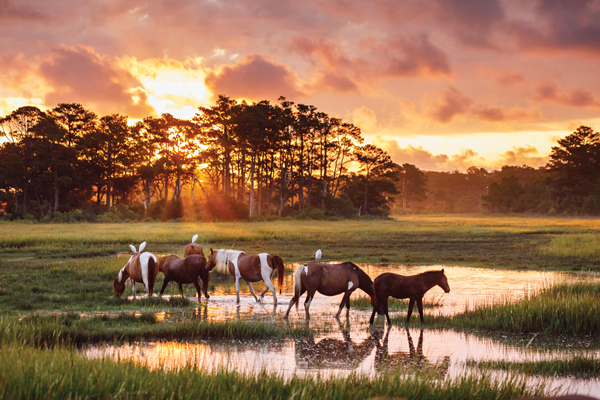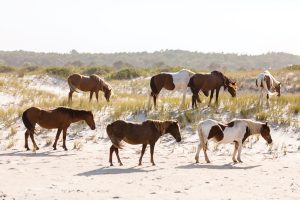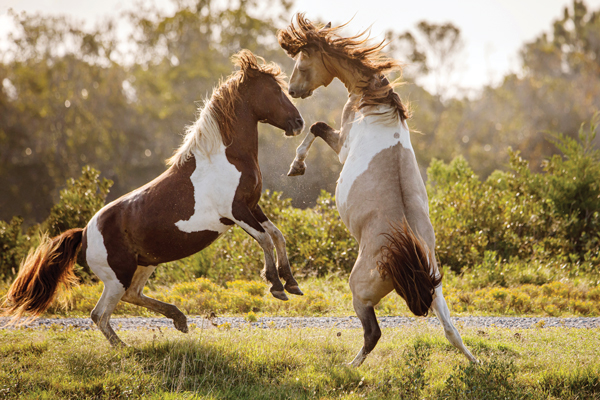The Wild Ponies of Chincoteague and Assateague Islands




In recent years, I have taken several trips to photograph wild horses. These trips have taken me west, where horses roam free and cowboys and cowgirls still ride the range. But last year, I wanted to do something different and head east to a place I’ve only visited in the pages of a favorite childhood book: Misty of Chincoteague. When most of us think of wild horses, we think of the American West, with its iconic herds of Mustangs. But wild horses and ponies can be found all across the U.S., including the coastlines of Virginia and Maryland on Chincoteague and Assateague Islands.


These wild horses are believed to have been on a galleon ship, bound for America from Spain. The ship wrecked in a storm, and the horses were able to swim to safety to the shores of Chincoteague and Assateague Islands, where they learned to survive on their own. A recent discovery of a shipwreck off of Assateague Island supports this theory.
While they are proportioned like horses, people most often refer to them as ponies due to their small stature, caused by a less-than-ideal diet of salt marsh plants and brush.
Seeing the ponies of Chincoteague and Assateague with my own eyes was a childhood dream come true. Getting to photograph them and come home with memories in the form of photographs was an unforgettable experience.
Managing The Ponies on Chincoteague and Assateague IslandsThere are actually two herds on Assateague Island, which are genetically identical. The major difference between the herds is in how they are managed. A fence on the Maryland/Virginia border keeps the herds separated. The Virginia herd is managed by the Chincoteague Volunteer Fire Department, who organize a yearly pony penning event. Some of the ponies are rounded up, driven across the channel on to Chincoteague Island, and auctioned off to raise money for the continued care of the herd, whose numbers are kept at around 150. The Maryland herd is managed by the National Park Service. They use birth control to manage the herd size, which is kept at around 90. |
This photo portfolio about the Chincoteague Ponies appeared in the July 2020 issue of Horse Illustrated magazine. Click here to subscribe!
Recent Posts
All Three Equestrian Sports Receive Final Confirmation for the LA 2028 Olympic Games
After a nail-biting two years of speculation about the inclusion of equestrian sports in the next Olympic Games, it was…
ASPCA Right Horse Adoptable Horse of the Week: Xanthus
Welcome to Horse Illustrated’s weekly installment of the Right Horse Adoptable Horse of the Week, offered in partnership with the…
Be Your Horse’s Joint Health Champion
Equine arthritis can affect horses of all disciplines and ages, and early intervention is crucial for maintaining comfort and performance.…
Tamie Smith: Taking It To The Next Level
Mother, grandmother, and winning 5* eventing rider—these three titles don’t typically go together. However, Tamie Smith, 49, is all of…
Organize & Customize Your Horse Trailer Storage
Organize and customizer your new horse trailer by adding a few simple storage items. I’ve been on the search for…
Breed Portrait: Gypsy Vanner
Learn about the Gypsy Vanner, a versatile and gentle small draft horse breed for equestrians of all types. After World…
View Comments
Thank you for sharing your adventures & photos of the horses. We live within a 2 hour drive & often visit the beaches in Summer & Fall. We have watched a few horses rummage through families picnic lunches, lol. We love watching them. Corolla & Corova, NC also have wild horses! Thanks again!
Amazingly beautiful photographs!